Wine Cabinet vs. Wine Coolers
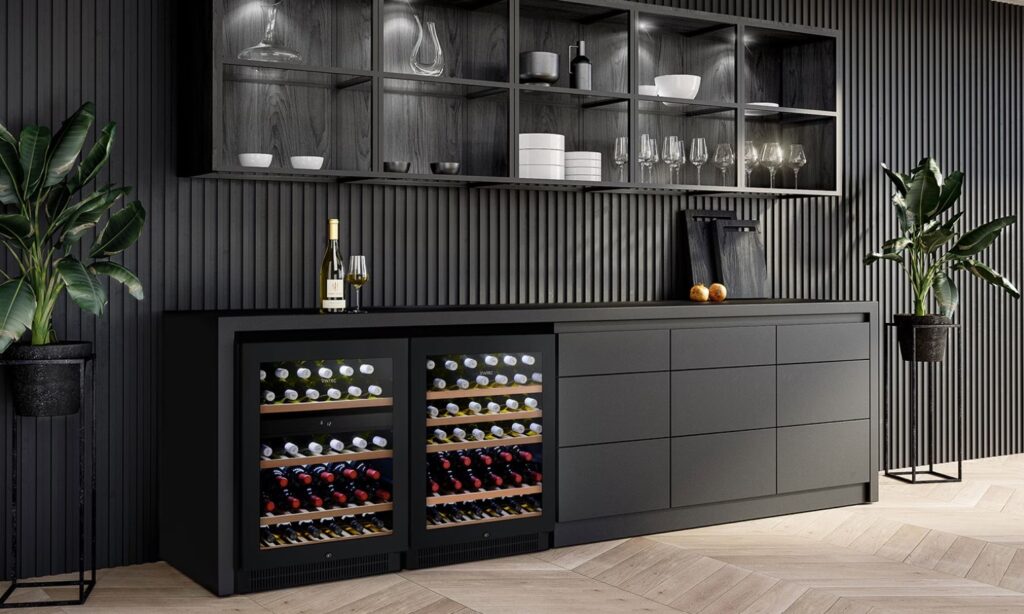
When it comes to preserving the delicate nuances and flavors of your cherished wine collection, the choice between wine cabinet and wine coolers can be a critical one. These storage solutions go beyond just keeping your bottles at the right temperature; they can influence the aging process and ultimately impact the quality of your wine. Wine cabinets offer a blend of elegance and function, making them ideal for serious collectors who prioritize long-term storage and appreciate the aesthetic appeal. On the other hand, wine coolers provide a practical and accessible option for those who seek convenience and a reliable means of chilling their wines for immediate enjoyment. In this comprehensive exploration, we delve into the intricacies of wine cabinet and wine coolers, uncovering their unique features, benefits, and key differences.
What are wine cabinets?
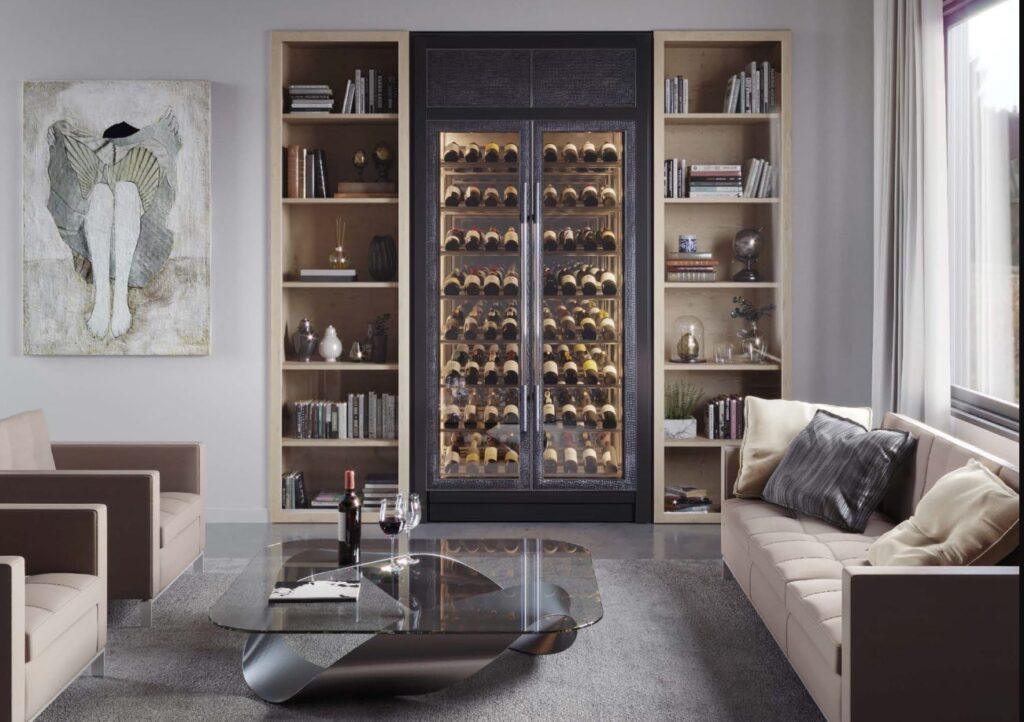
Wine cabinets provide a sophisticated and convenient way to store your wine collection while enhancing your interior décor.
Wine cabinets have gained popularity as an efficient and convenient solution for storing wine.
Unlike traditional wine cellars that require substantial space, planning, and investment, wine cabinets offer a more accessible way to preserve your wine collection.
These elegant pieces of furniture are designed not only to store wine but also to showcase it. The popularity of wine cabinets has surged due to their convenience, versatility, and ability to fit seamlessly into modern homes.
Types of wine cabinets
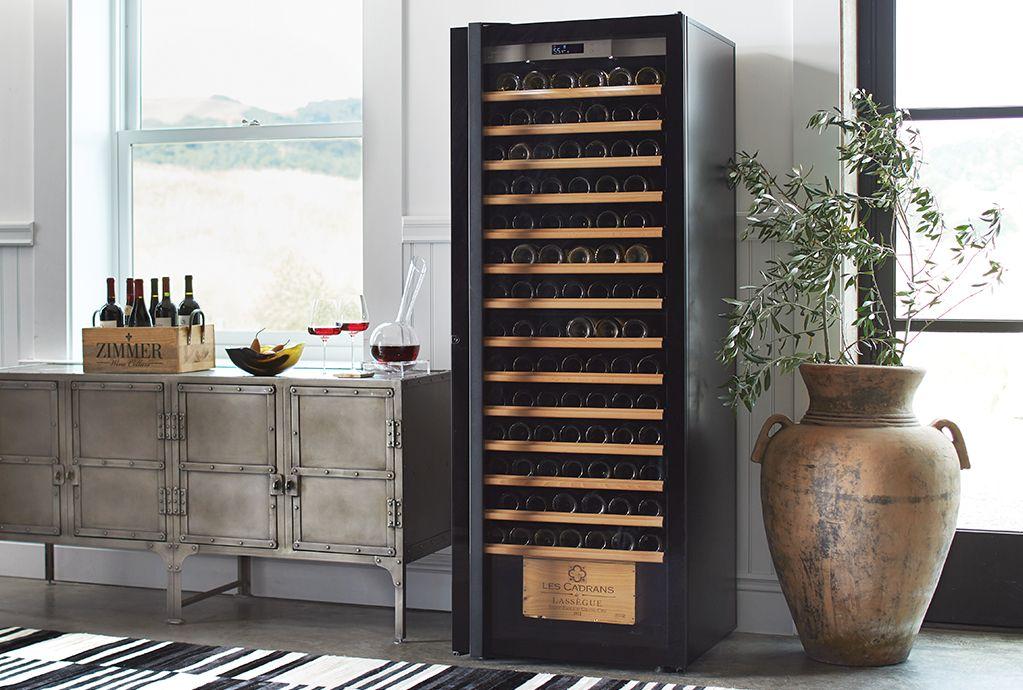
There are several types of wine cabinets available for storing and displaying your wine collection. Here are some common types:
Single-temperature wine cabinet
These cabinets are ideal for medium to long-term wine storage. They maintain a consistent temperature suitable for wine bottle storage, ensuring that your wines age gracefully.
Built-in wine cabinets
Built-in wine cabinets are designed to be incorporated into existing cabinetry or furniture, offering a built-in and cohesive appearance within your kitchen or living space.
Freestanding wine cabinets
Freestanding wine cabinets are versatile and can be placed anywhere in your home. They often resemble elegant pieces of furniture and are available in various designs to match your aesthetic preferences. Freestanding wine cabinets come in various sizes and styles, making them versatile options for wine storage.
Dual-zone wine cabinets
Designed for those who want to keep their wines at ready-to-serve temperatures. Dual-zone wine cabinets have separate compartments with different temperature settings, allowing you to store red and white wines at their ideal serving temperatures.
Multi-Temperature wine cabinet
Multi-temperature wine cabinets offer even more versatility. They have multiple compartments with individually adjustable temperatures, accommodating various types of wines in a single unit.
Integrated wine cabinet
Integrated wine cabinets are built to seamlessly blend into your kitchen or storage area. They provide a sleek and customized look, often designed to fit within cabinetry.
Wine cabinets with humidors
For collectors who appreciate the finer things in life, wine cabinets with built-in humidors offer a dual-purpose solution. These cabinets not only store wine but also provide a humidified space for aging cigars, offering a touch of luxury.
Why use a wine cabinet?
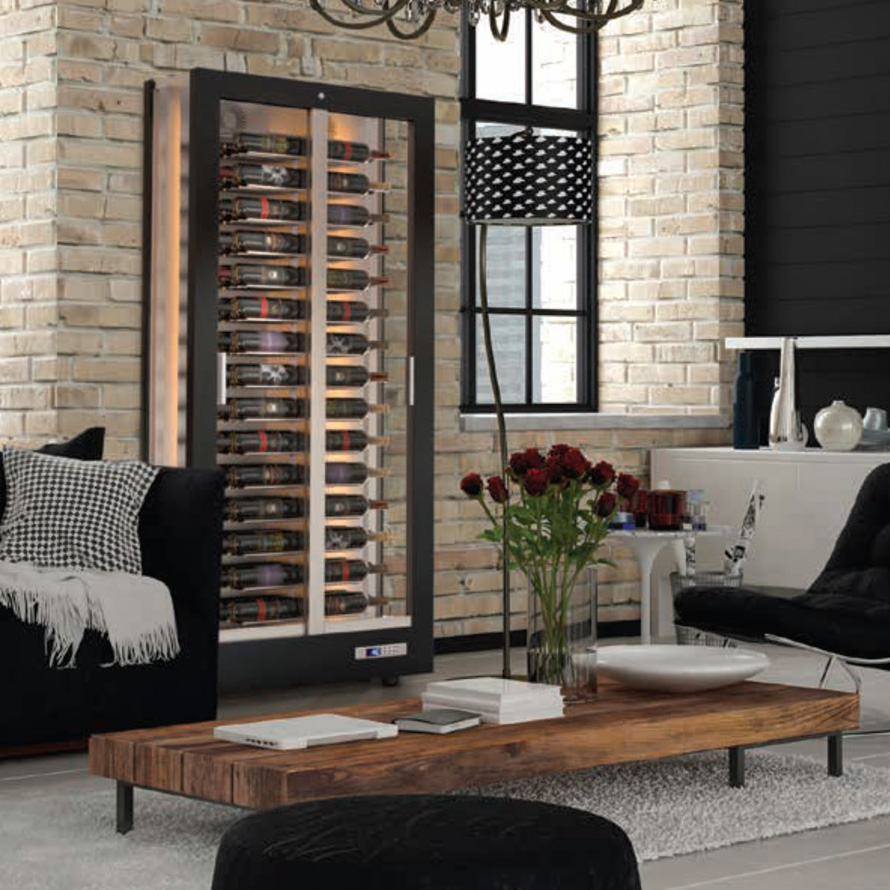
Unlike fridges, wine cabinets offer several advantages for wine enthusiasts and collectors, making them a valuable addition to wine storage solutions. Here are the key reasons why you should consider using a wine cabinet:
- Temperature and humidity control: Wine cabinets offer precise temperature and humidity control, typically between 45°F and 65°F (7°C to 18°C), creating an environment that closely mimics the conditions of a traditional wine cellar. This stability is crucial for the proper aging and maturation of your wines. This temperature range ensures that your wines age gracefully, preserving their flavors and aromas. Some wine cabinets incorporate a thermal pump to maintain the ideal humidity levels. This prevents corks from drying out, which could lead to wine spoilage.
- Design and customization: One of the standout features of wine cabinets is their customizable design. With various sizes, finishes, and shelving options available, they can be tailored to fit seamlessly into any living space or cellar. Some models even incorporate glass doors for displaying your collection while protecting it from light and temperature fluctuations.
- Capacity and long-term storage: Wine cabinets are designed for both short-term and long-term storage, making them an excellent choice for serious collectors who plan to age their wines for years. Their larger capacity compared to wine coolers allows for storing a substantial number of bottles.
- Convenience: Wine cabinets are plug-and-play solutions that require minimal installation. They are ready to use right out of the box, sparing you the complexities of cellar construction.
- Energy efficiency: Most modern wine cabinets are designed with energy-efficient features, making them environmentally friendly and cost-effective in the long run.
- Accessibility: With wine cabinets, your collection is readily accessible. You don’t need to venture into a dimly lit cellar; instead, you can admire and select your wines at the touch of a button.
- Cost-effective: When compared to building a wine cellar, wine cabinets are often a more budget-friendly option. They allow wine enthusiasts to enjoy proper storage without breaking the bank.
- Lighting: Wine cabinets often feature controlled lighting, which prevents harmful UV rays from affecting your wine. This is essential for preserving the quality of your wines over time.
- Shelving: Wine cabinets come with well-designed shelving that allows you to organize and store your wine bottles efficiently. This makes it easy to access and display your wine collection.
- Heating and cooling functions: Wine cabinets are equipped with heating and cooling systems, ensuring that the temperature remains constant regardless of external conditions. This is particularly important for long-term storage.
- Vibration-free storage: Unlike regular refrigerators, wine cabinets minimize vibration, which can disturb the sediment in wine bottles. Stable storage conditions are crucial for wines that improve with age.
Using a wine cabinet provides a controlled environment that enhances the aging process of your wines and ensures they remain in excellent condition for years to come.
How to buy the right wine cabinet
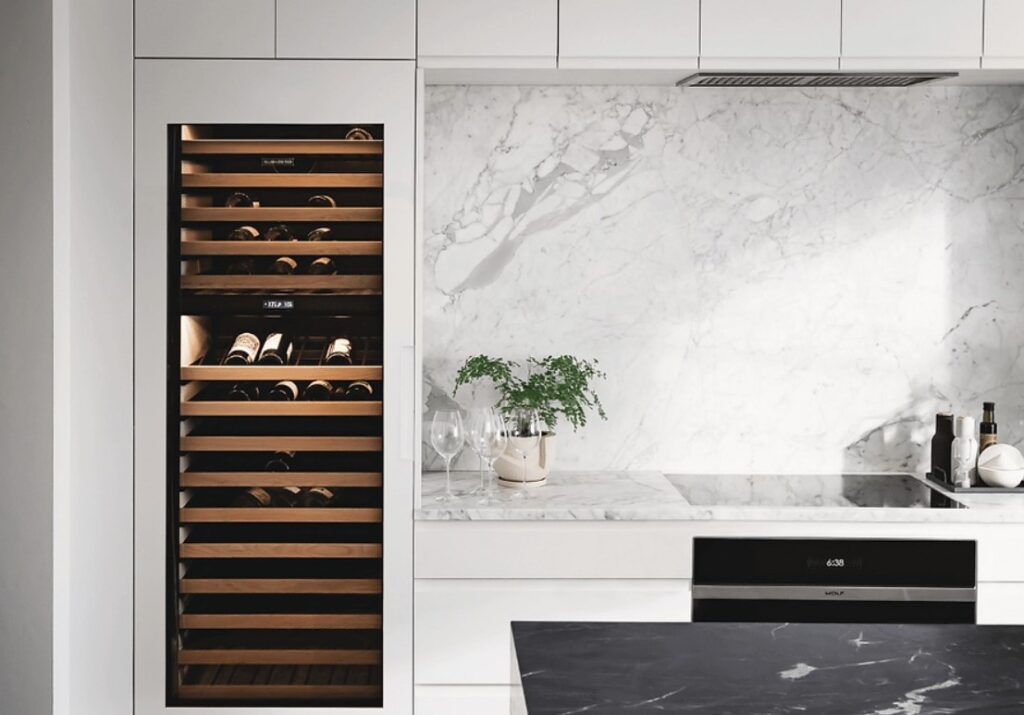
Selecting the ideal wine cabinet for your needs requires careful consideration. Factors to ponder include your budget, available space, the size of your wine collection, and the desired features (e.g., single-zone or dual-zone temperature control, design, storage capacity). By understanding your unique needs you will enhance your wine-drinking experience.
- Temperature and humidity range: Wine is sensitive to temperature variations. An ideal wine cabinet should have a dual-zone temperature control system that allows you to store red and white wines at their respective optimal temperatures. Additionally, humidity control is vital to prevent corks from drying out, which can lead to oxidation.
- Storage capacity: Size matters when it comes to wine cabinets. Consider the number of bottles you currently have and anticipate your future needs. Cabinets come in various sizes, from compact units that can hold a dozen bottles to expansive models that accommodate hundreds.
- Design and aesthetics: Wine cabinets can be both functional and stylish. When choosing one, think about how it will fit into your home decor. Options range from classic wooden cabinets to modern, sleek designs that can be seamlessly integrated into contemporary interiors.
- Ventilation and noise: Proper ventilation is vital to ensure your wine cabinet operates efficiently. Look for a cabinet with a ventilation system that expels heat and maintains a consistent temperature. Additionally, some wine cabinets can be noisy, so consider the noise level if your cabinet will be in a living space.
- Security features: Protecting your wine investment is paramount. Some wine cabinets come with locking mechanisms to prevent unauthorized access. This is particularly important if you have valuable or rare bottles in your collection.
- Energy efficiency: In today’s eco-conscious world, energy efficiency is a key consideration. Look for wine cabinets with high Energy Star ratings to minimize your environmental footprint and save on utility bills.
- Budget considerations: Wine cabinets come in a wide range of price points. While it’s tempting to splurge on a top-of-the-line model, it’s crucial to set a budget that aligns with your needs and preferences.
Purchasing the right wine cabinet is a significant investment for any wine enthusiast. Remember that investing in a quality wine cabinet is an investment in the future enjoyment of your wines.
What are wine coolers?
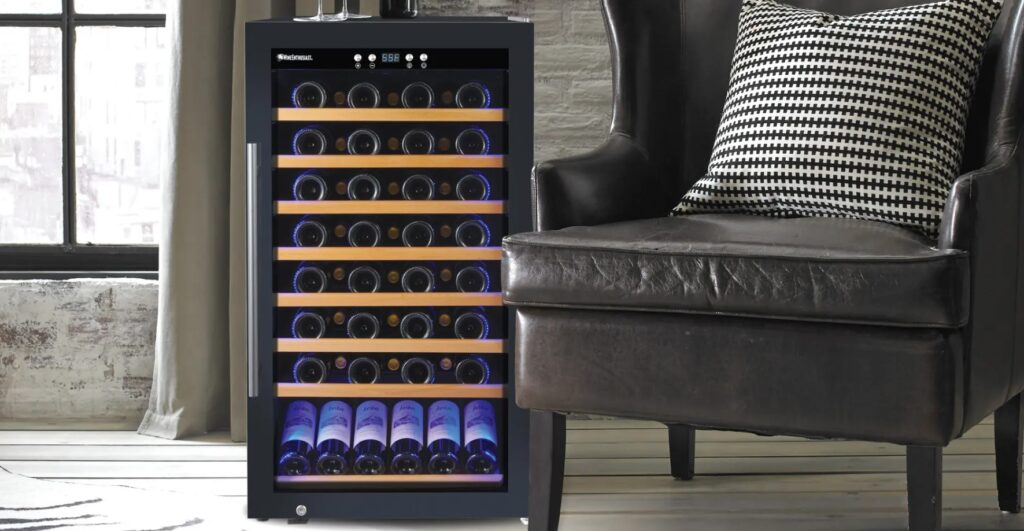
Wine coolers, also known as wine refrigerators or wine fridges, are specialized appliances designed to store and chill wine at precise temperatures, designed to provide quick and efficient cooling for wines meant to be enjoyed sooner rather than later.
They offer an ideal solution for wine enthusiasts who prioritize easy access and convenience.
Unlike regular fridges, wine coolers maintain ideal conditions for wine, which typically range from 45°F to 65°F (7°C to 18°C), depending on the type of wine.
These coolers offer a controlled environment that prevents temperature fluctuations and protects wine from harmful factors like light, humidity, and vibrations.
Types of wine coolers
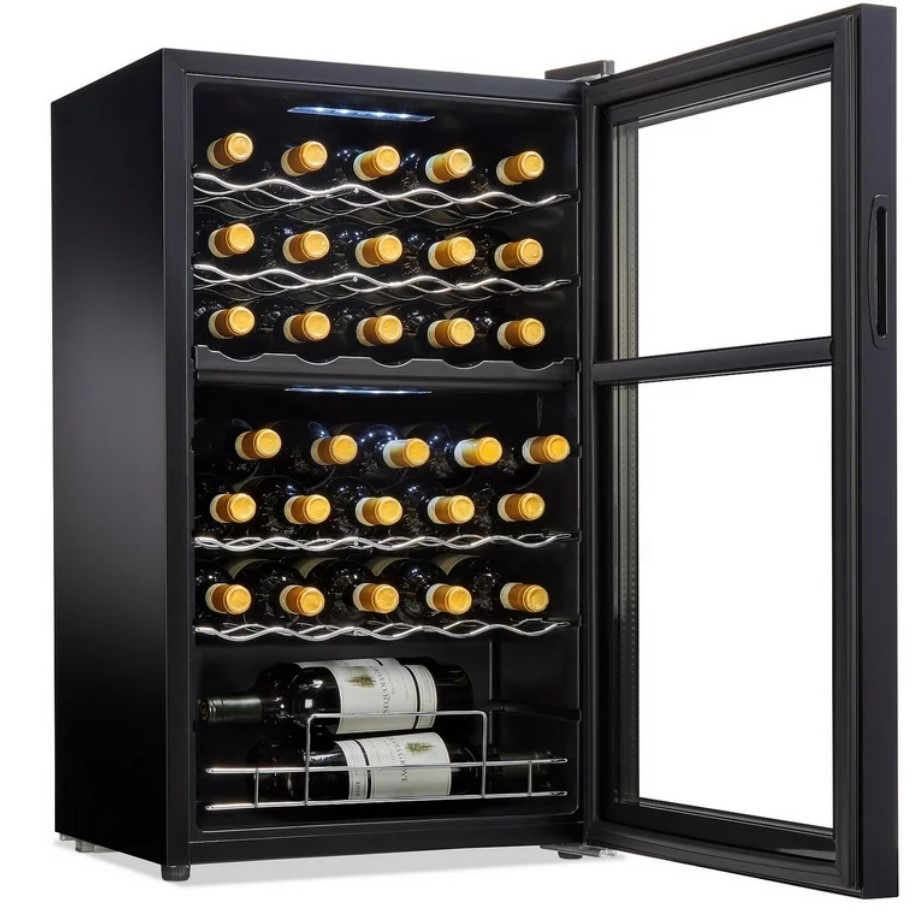
Single-zone wine coolers
Single-zone wine coolers maintain a uniform temperature throughout the entire cabinet. They are ideal for those who predominantly store one type of wine, as they cannot accommodate varying temperature needs.
Typically, they suit the needs of red or white wine enthusiasts.
Dual-zone wine coolers
Dual-zone wine coolers are the versatile champions of wine storage. They feature two separate compartments with independent temperature controls, allowing you to store both red and white wines simultaneously at their optimal serving temperatures.
This flexibility is a favorite among wine connoisseurs with diverse collections.
Built-in and freestanding wine coolers
Built-in wine coolers are designed to seamlessly integrate into your kitchen cabinetry, providing a sleek and polished look.
Freestanding wine coolers, on the other hand, are standalone units that can be placed anywhere. The choice between the two depends on your kitchen layout and aesthetic preferences.
Thermoelectric vs. Compressor wine coolers:
Wine coolers can be classified into two cooling mechanisms:
Thermoelectric wine coolers
These use a solid-state cooling technology, making them quieter and vibration-free. They are perfect for smaller collections and environments with minimal temperature fluctuations.
Compressor wine coolers
Compressor-driven coolers operate similarly to regular refrigerators. They can maintain lower temperatures and are suitable for larger wine collections. However, they may produce more noise and vibrations.
Why use a wine cooler
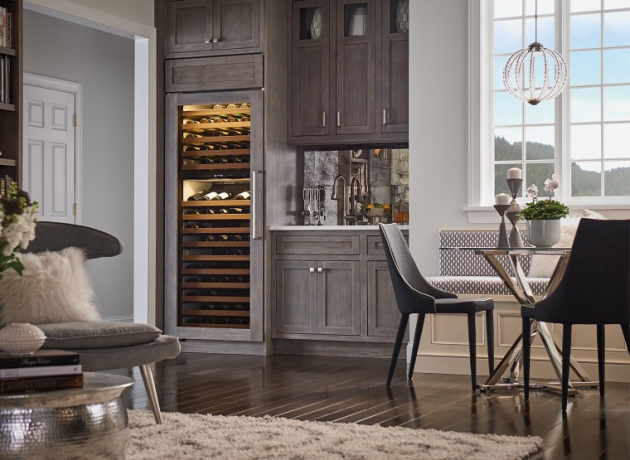
There are several reasons why wine enthusiasts and collectors should use wine coolers:
- Preservation: Wine coolers create a stable and consistent environment for your wines, preventing spoilage due to temperature fluctuations, humidity issues, or exposure to light.
- Aesthetic appeal: Wine coolers come in various designs and sizes, making them a stylish addition to your home or wine cellar. They can enhance the overall aesthetics of your living space while providing a functional storage solution.
- Convenience: Having your wines readily accessible at the right temperature means no more waiting for bottles to cool down in the regular fridge or warming up to serving temperature.
- Aging potential: For collectors and enthusiasts, wine coolers allow for controlled aging of wines, improving their taste and complexity over time.
- Versatility: Wine coolers are versatile appliances. They can be installed in various locations, such as the kitchen, dining room, or even in dedicated wine cellars. This flexibility allows you to keep your wine collection close at hand and easily accessible.
- Cost-effective: Proper storage reduces the risk of prematurely spoiling expensive bottles, saving you money in the long run.
How to buy the right wine cooler?
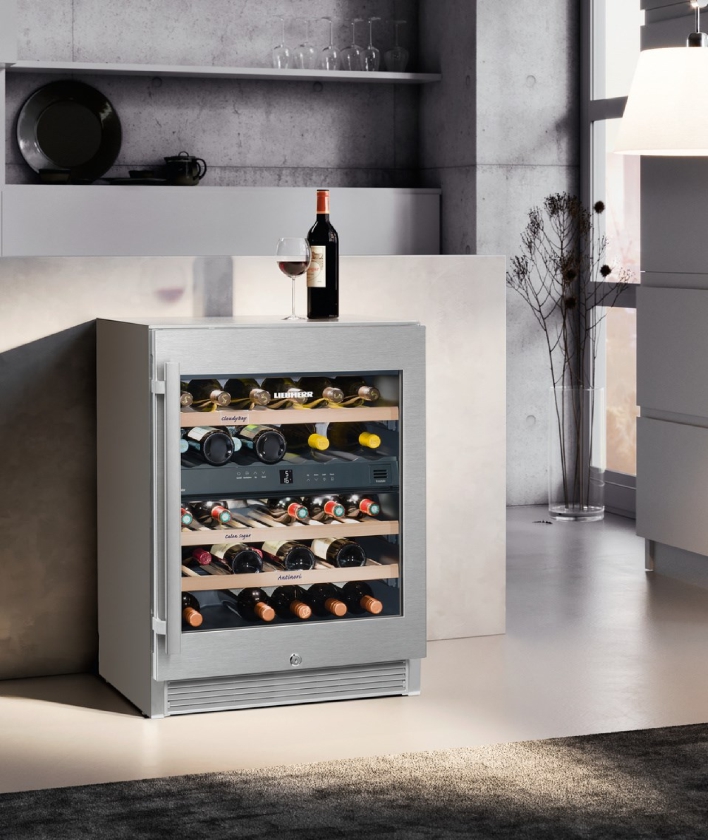
Before investing in a wine cooler, consider these factors:
- Size and capacity: Determine how many bottles you plan to store to select the right size and capacity.
- Temperature zones: Decide if you need a single or dual-zone cooler based on your wine collection.
- Location: Consider where you will place the wine cooler and whether it should be built-in or freestanding.
- Budget: Wine coolers come in various price ranges, so establish your budget before shopping.
Difference between wine cabinets and wine coolers
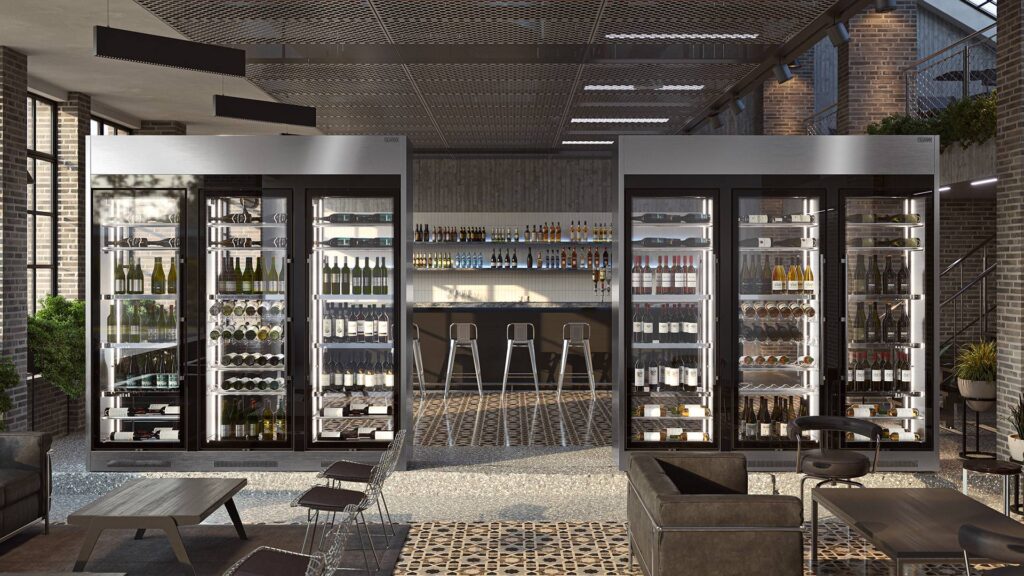
The choice between a wine cooler and a wine cabinet ultimately depends on your wine preferences, collection size, and commitment to wine storage. Here are some key considerations to keep in mind:
- Collection size: If you have a small to medium-sized collection that you plan to enjoy relatively soon, and you prioritize easy access and serving, a wine cooler could be your ideal choice. For those with a significant collection of wine, especially those passionate about aging wines, a wine cabinet with temperature and humidity control may be essential.
- Budget: Wine coolers are generally more budget-friendly upfront. Wine cabinets generally come with more advanced features and customization options, which can lead to higher costs.
- Space: Consider the available space in your home. If you have a dedicated area for a larger storage unit, a wine cabinet might be the perfect addition to your space. If space is limited, a compact wine cooler can be a practical solution.
- Commitment: Your level of commitment to wine storage plays a crucial role. If you’re a serious wine collector with a passion for aging, a wine cabinet is the clear winner.
Conclusion
In the grand debate of wine cabinets vs. wine coolers, there’s no definitive winner—only the best solution for your unique needs.
Ultimately, your choice depends on your personal preferences, space limitations, and collecting aspirations.
Whichever you choose, both wine cabinets and wine coolers share a common goal: to ensure that every bottle you uncork delivers an exceptional experience that’s a testament to the art of winemaking.
Our Expertise
Valentina Silovic is a sommelier and content creator with over a decade of experience in the wine industry.
For this article, she collaborated with Dario Drmac, a wine entrepreneur renowned for his innovative digital approach, and Nenad Trifunovic, an esteemed moderator, wine workshop educator, and dedicated advocate for wine-drinking culture.
Their combined experience and insights contribute significantly to the depth and authority of the content presented.
Want to meet the team, seek recommendations, and discover in-depth insights into our product testing and reviews? Click here now!



















